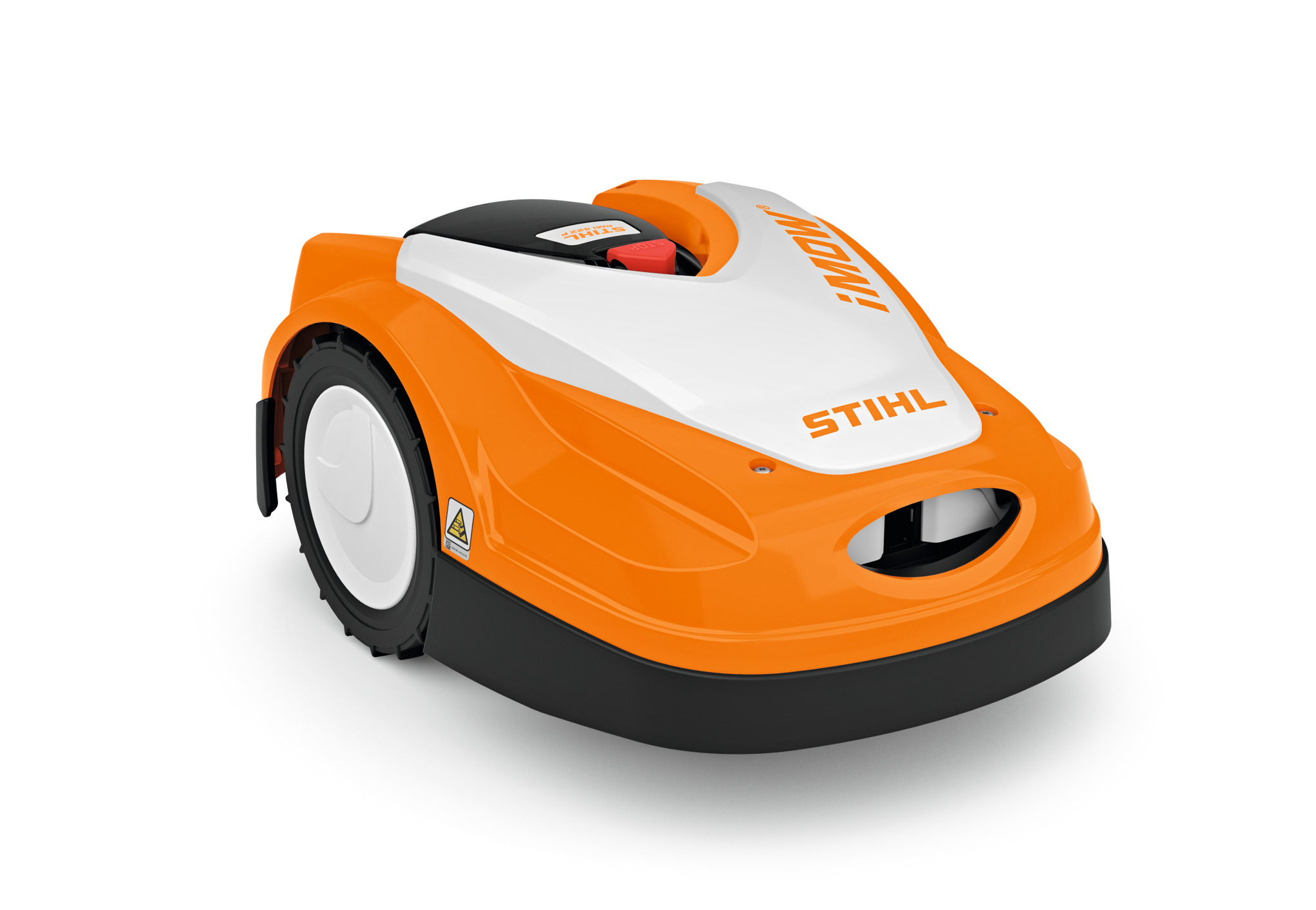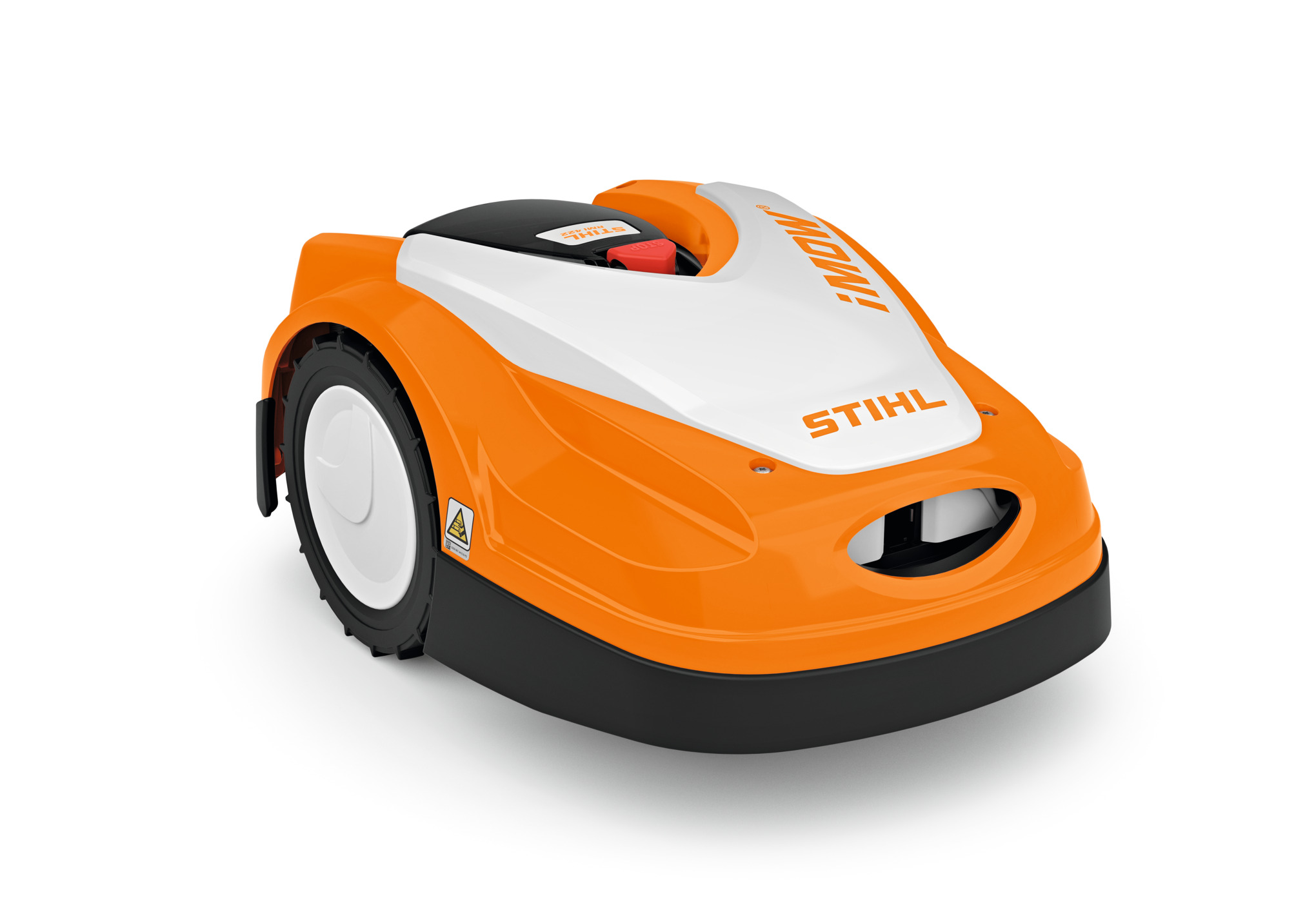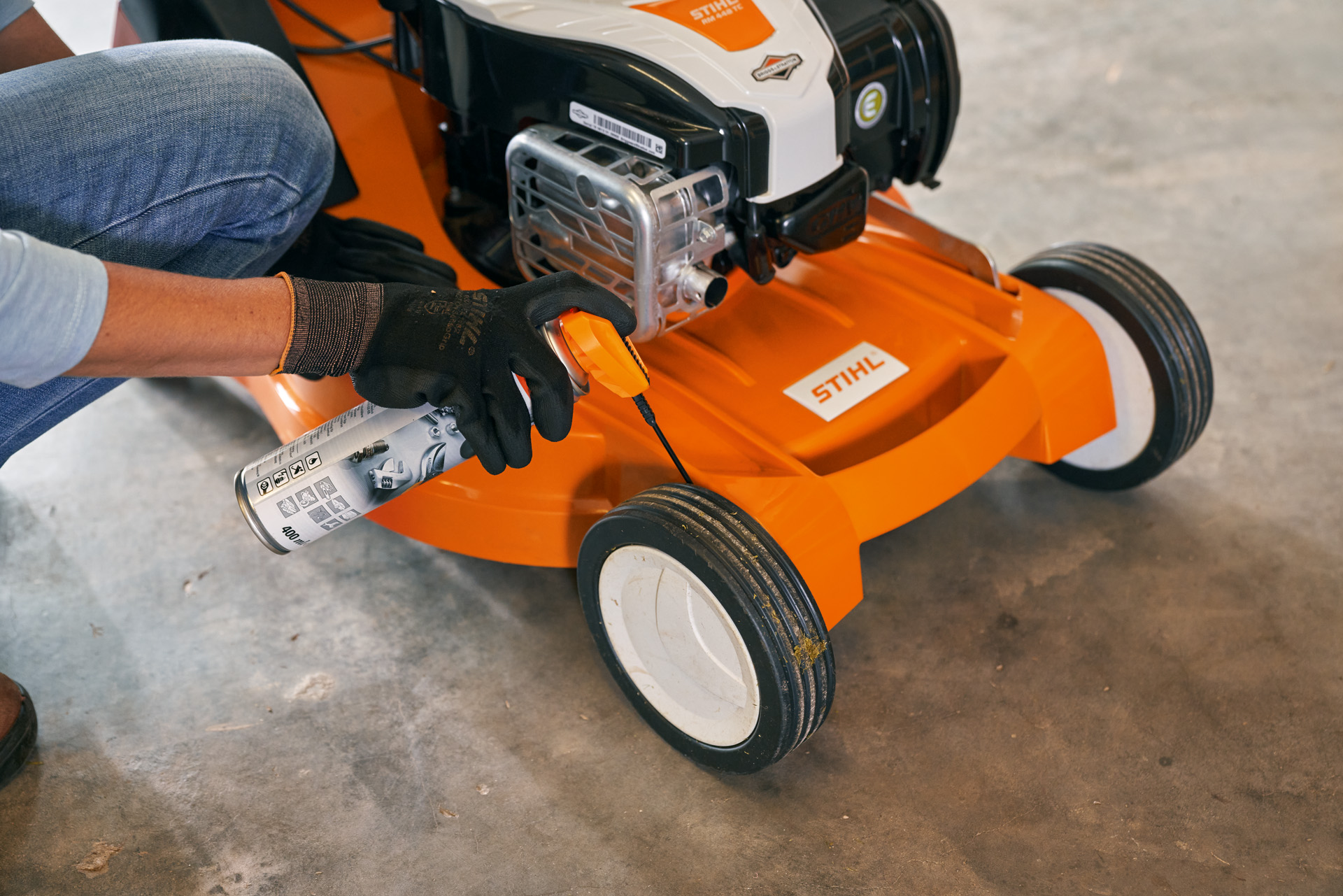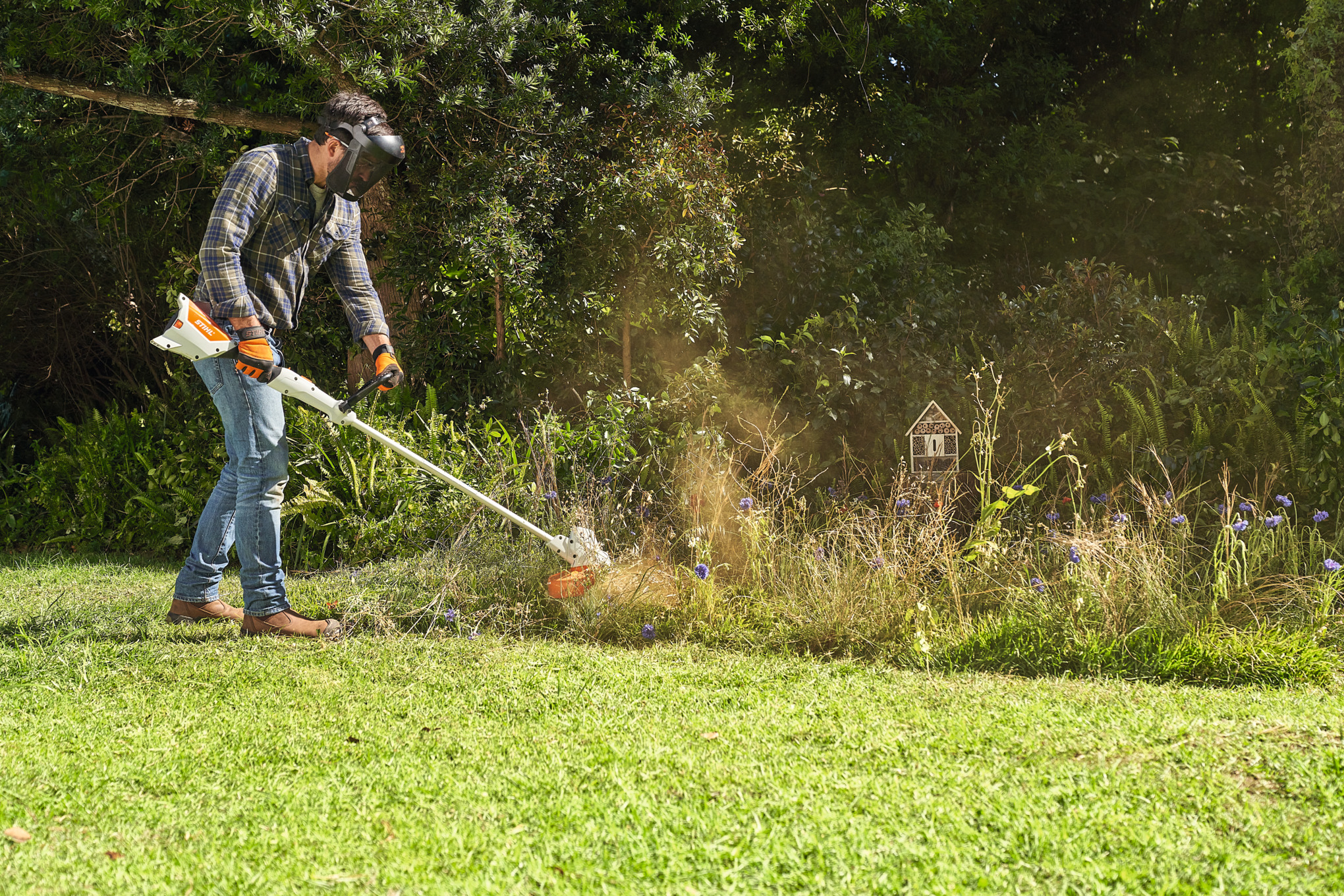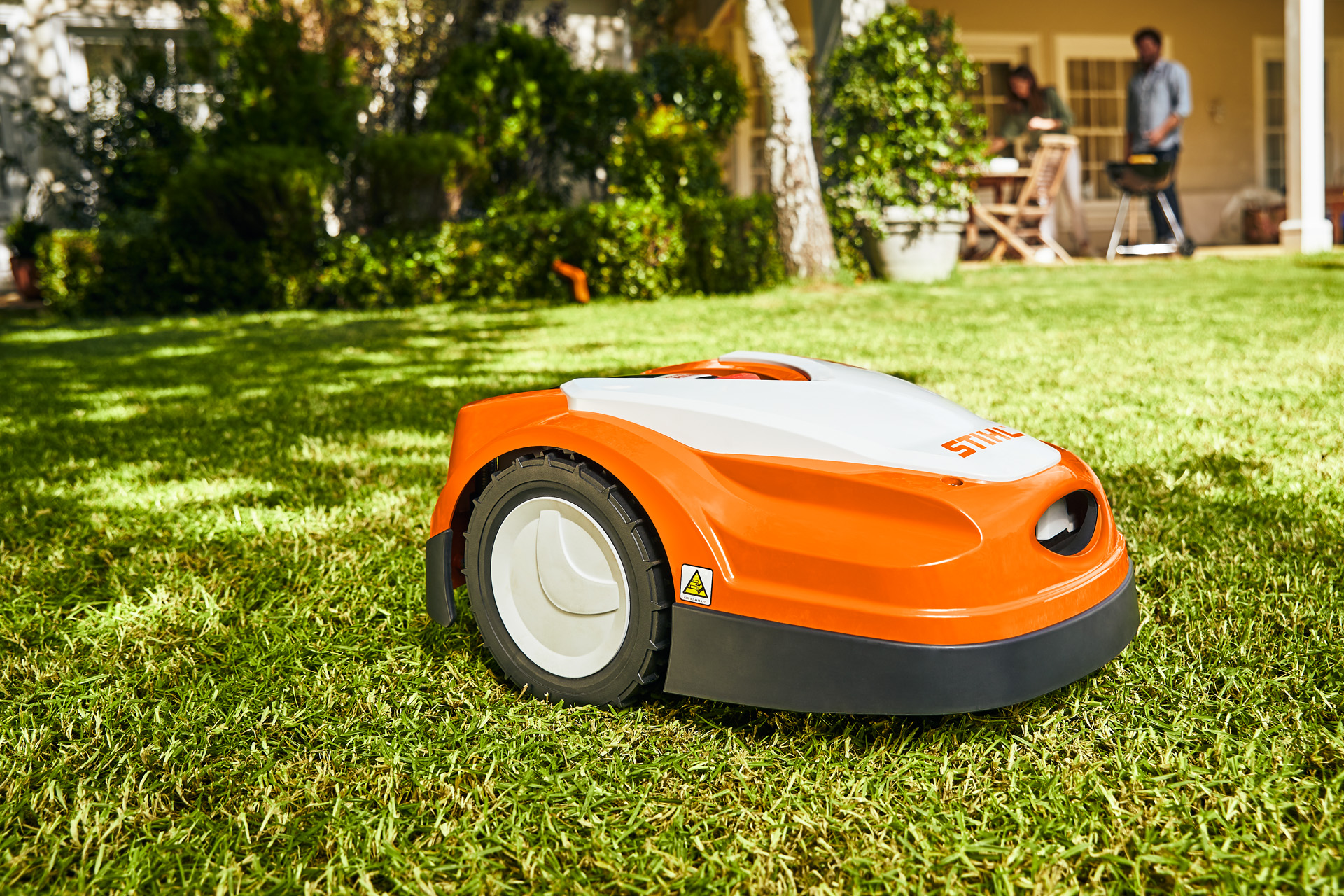How to mow your lawn
Regular mowing is a must for a tidy garden, but also for a healthy lawn. Mow your way to a lush, green lawn with our expert guide.
15.05.2023

How to mow a lawn: The basics
Cutting the grass is not just a matter of aesthetics: it’s an essential maintenance task that promotes growth and vitality. Knowing how to mow your lawn properly helps to promote dense, healthy growth and banish unsightly weeds.
How often should I cut the grass? For a perfect lawn, you should mow at least once a week – possibly even more in spring. If your lawn grows more than 2.5 cm per week, you’ll need to mow it twice a week.
Lawn type is also a factor in how often you need to mow: a durable recreational lawn is fine with a weekly cut during the growing season, while you may need to mow an ornamental lawn every four to seven days. Lawns in shade grow more slowly, so once a week should be fine.

How short should I mow the lawn?
Grass should be kept at around 3 to 5 cm. Too long and your lawn will be untidy and susceptible to weeds; too short and it will not protect the soil from diseases and will be extremely prone to water stress and lawn scorch in high temperatures. Mow your grass to a length of up to 5 cm in the summer when temperatures rise to keep the soil underneath cool. Various factors may cause your grass to grow back unevenly, so you should readjust the cutting height each time you mow the lawn.
Go shorter on an ornamental lawn
If you have an ornamental lawn, you can keep it at a length of 2 to 3 cm – and even less if it doesn’t get walked on and is not put under any other strain. This makes the lawn look beautifully velvety and even. However, the higher the temperature, the longer you should keep the grass. We recommend a cutting height of 5 cm during hot, dry summer weather.
Longer in the shade
If your lawn is in shade, it’s better to keep it a bit longer and mow to a height of 5 to 6 cm all year round. The extra surface area enables the grass to absorb more sunlight. Make sure a shady lawn is also getting enough water, as the surrounding hedges, shrubs and trees will be competing for valuable resources.

The 1/3 rule of mowing
If you have an overgrown lawn, you should never mow it right down to 4 cm in one go. Perhaps you’ve come back from holiday or neglected your garden for a while and need to mow the lawn? Just remember that a drastic cut can do more harm than good. Instead, cut off no more than a third of the height of the longest grass and use this approach to reach your target length over several days. This approach to lawn cutting respects the natural growth cycle of the grass and will not damage the growing point, which is located around halfway up a blade of grass.
How to mow a new lawn
If you’ve recently sown seeds for a new lawn, you are no doubt eager to see a lush green expanse of perfect grass. You’ll need to be patient, though: while the grass is germinating, it needs watering and rest more than anything else. Wait until the new grass has reached a height of 8 to 10 cm before attempting the first cut – this means the grass has the energy to bulk out a bit and promotes dense growth. For the first mowing of a new lawn, cut the grass to 5 to 6 cm – a bit longer than a mature lawn. You should generally avoid cutting more than a third of the grass’s length. Always ensure your lawn mower blades are sufficiently sharp, as blunt lawn mower blades can rip out the delicate young blades of grass.
Can I mow a lawn when it’s wet?
Your lawn mower will not thank you if you cut wet grass – the damp grass will stick to the blade and blunt it. If mowing your lawn while it’s wet is unavoidable, please bear the following in mind:
- Avoid walking on the grass before you mow the lawn, as wet grass will not readily spring back upright, so it will not be caught by the mower.
- Do not use a mulch mower on a damp lawn. Mulching wet grass puts a huge strain on the soil and smothers the lawn. Use your grass collection box instead.
- Don’t wait: empty the collection box when it is half full. The weight of the lawn mower itself will put a strain on your lawn when it’s wet, so empty the collection box frequently to help minimise additional stress.
- Make sure your mower blade is sharp. If they already struggle to tackle your lawn when it is dry, don’t even try when it’s wet. Wet grass will also blunt your mower blade more quickly, meaning your grass is damaged and torn away rather than cleanly cut.
- When you mow a wet lawn, keep the mower at a higher cutting height (approximately 6 cm). It’s better to mow the lawn a second time to a shorter length once it has dried out.
Tip: knowing your lawn height It can be hard to judge whether your lawn is 6 cm long or 8 cm long, which makes it hard to know how to adjust your mower. Try this: place a piece of thin cardboard on the lawn, and use a ruler to measure the cardboard’s distance from the soil. You can then adjust the cutting height appropriately on the lawn mower.

Zero emissions, compact and quiet: STIHL cordless lawn mowers
Our versatile cordless lawn mowers offer a multitude of benefits. They are extremely quiet, so your neighbours will be happy, and they utilise innovative STIHL battery technology that does not compromise on performance. Intelligent features such as the Eco function allow you to mow for longer with each battery charge. Have you discovered our RMA 339 cordless lawn mower yet?
Can I mow my lawn after fertilising it? After applying lawn feed, you should leave the grass to absorb the nutrients for a while. Check the instructions of your lawn feed, but in most cases, if you can still see the fertiliser pellets on the ground, you need to wait a bit longer before mowing the lawn. You should ideally mow your lawn two or three days before fertilising so that the soil can take in nutrients quickly.
When is the best time to cut the grass? During the garden season (March to November), you can generally mow the lawn whenever it’s dry. There are no specific rules about when you are allowed to mow; however you should consider noise levels before firing up the mower at certain times of day.
How to mow a lawn: Lawn mower care and operation
For perfect grass, your lawn mower needs to be a well looked-after companion. We recommend that you read the user manual for your lawn mower, so you know what you need to do to enjoy using your machine for many years to come. You can look up your user manual here.
Sharp blade
A lawn mower with a blunt blade cannot do its job. You will not be able to mow your lawn evenly or cut the grass to your preferred length. For the best mowing result, we recommend sharpening the blade after 20 to 25 hours of operation. You should also sharpen it at the end of the season so your mower is ready to go when spring returns.
Replacement blades from your dealer
If you notice that your mower blade is not in great condition before you mow your lawn for the first time in spring, you’ll need to have it replaced immediately by your STIHL dealer. Otherwise, we recommend removing and sharpening the blade or having it sharpened and balanced by a specialist.
Mower blade safety Before you inspect your lawn mower blade, make absolutely sure that the mower is switched off and cannot start. If you have a cordless lawn mower, remove the battery; for petrol-powered machines, pull out the spark plug cable; and for electric lawn mowers, ensure that the plug has been disconnected from the socket.

Setting the correct cutting height
Before mowing your lawn, establish whether your lawn mower cutting height is specified in centimetres, millimetres or levels. If you’re unsure what cutting height to select, read the operating instructions or ask your STIHL dealer.

Mowing on hilly ground
Mowing an uneven lawn can be challenging. We recommend you work across the slope, from left to right, rather than up and down. This will reduce the amount of effort you need to put in and make it easier to mow in straight lines. What’s more, it’s a much safer way to mow on a hill, as there is less risk of your lawn mower running you over if you fall.
Intelligent lawn care: robot lawn mowers

More convenience, more speed
Mow your lawn automatically with the STIHL iMOW® intelligent robot lawn mower. It avoids obstacles, can navigate slopes effortlessly and recharges itself when required. The models in the iMOW® range offer the utmost convenience so you can enjoy your garden while they do the hard work.
Grass cutting tips and tricks
Cutting your grass correctly is easy when you know how. Once you have mastered the right way to mow, you’ll be rewarded with a beautiful, healthy lawn. Here’s our mini-guide on how to mow.
Mow the edges first, then the main area
Start by mowing the edges first, then mow the main area of the lawn. This means that your lawn mower will pick up any grass trimmings left behind when mowing the lawn.
Mulch mowing: mow and fertilise in a single step
A mulch mower finely chops the cut grass and feeds the particles back to the lawn as a source of valuable nutrients. This saves time and effort as you don't have to empty your collection box or worry about fertilisers.
Do not walk on areas that haven’t been mowed
When you mow, you should only tread on areas of grass that you have already cut. If you flatten the areas that haven’t been mowed, the grass won’t have time to spring up again before being cut, and you will get an uneven result.
Overlap your lines for a neat result
To achieve an even cut without missing anything, move the mower in straight lines across the lawn. When you start a new line, overlap the previous line by around a wheel’s width.

When should I avoid mowing my lawn? There are no specific rules about when you can or can't mow your lawn, but you should think about whether you will be causing a noise nuisance. Robot lawn mowers are quieter than conventional models but may still irritate some people at certain times. You just need to be considerate – would you want to be woken by a lawn mower at 7am on a Sunday or bank holiday?
Summary: how to mow a lawn
- You should mow your lawn every four to seven days.
- The rule of thumb for cutting heights is 3 to 5 cm for recreational lawns, 2 to 3 cm for ornamental lawns and 5 to 6 cm for shady lawns.
- Never cut more than a third of the total height of the grass.
- It’s a good idea to mow your lawn a few days before you apply lawn feed.
- Do not mow your lawn while it is wet.
- Have the blades of your lawn mower sharpened by your STIHL dealer at least once a year.
- Trim the edges of the lawn first, then the main area
- If your lawn is sloped, cut in straight lines across the slope, not from top to bottom.
- Be considerate of your neighbours when you mow.
